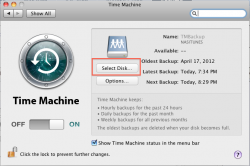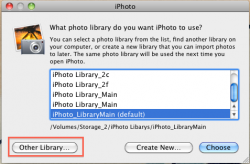All of this can be done. I would stay away from the partition. Others might chime in but I would use folders and then back up those folders with your media/pictures/documents.
Folders seem like a good option. Definitely a lot easier to setup.
Folder 1: Media (this will be linked to the iTunes player on your desk tops etc and to plex (see above answer)) All your media will reside in here. Movies, Music, etc. Once this folder is setup, you will be able to access it via streaming for iPhone/iPad/iPod Touch etc.
How do I link my media folder to itunes and plex? For itunes do I change the iTunes media folder location?
You won't be able to load files via connection from your client computer though. You will need to either setup a local library with the media pointing to the folder or use a VPN solution to load files.
This is confusing could you elaborate?
How do I point iPhoto to the photo folder on my nas?Folder 2: Photo's Photo's, this can reside within folder 1 if you want. This will be up to you.
is there anyway that files download here and once the download is complete they go to another folder (video or music) on the NAS?Folder 3: Downloads I would use this to for your download section.
For TM, I would have a folder called TimeMachine. You can pick this folder from the TM interface on your Mac. If you want to keep them separated, Have TimeMachineUserName folder for each user. Then point the time machine to each folder. You could also use computer name if you want. I don't know your system setup etc.
I have an iMac (mine) and a macbook pro (dad's) it's probably best to setup a Time Machine folder for each user. How do I set this up? Are there any downfalls?
I don't know much about RAID, which is best or my case. I want the most capacity but also want some failure protection.The back up can be done several different ways. Four discs you can do a RAID 1->5. I have done a RAID 5. You can pick what files are important to back up off the NAS if you want. Most boxes come with some sort of back up utility built in. If not, there are plenty of free open source choices you can use, but I am guessing the Synology has there own and it lets you back up on day "X" at "Y" time. For your most critical files I would also have an attached USB hard drive to back up just those files. If you have a total of one gig, get a two gig or higher usb drive. Your files will expand especially over the next few years.
All of this should be able to be done from within the user interface of synology app whether it is web based or client based. I would stay away from the partitioning and just use folders. If you setup the disks in a raid format you will be able to hot swap a disk if it goes down.
If you have any other questions please do not hesitate to ask.
Hot swap is definitely great. Do you have experience with the synology web based UI? Thank you very much All this is very helpful.



